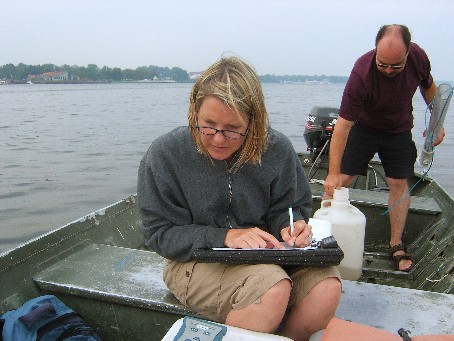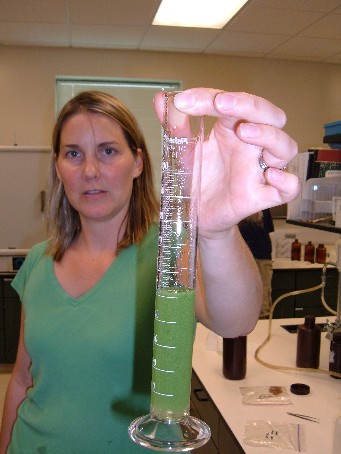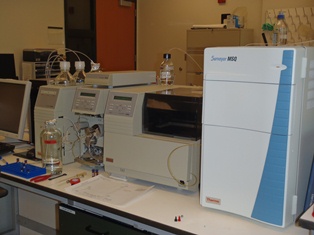Cyanobacteria and Associated Toxins in West Michigan Lakes



Open Water Sampling on Lake Macatawa
Algae Bloom Sample
LC-MS for Toxin Analysis
Publication:
Project Description:
AWRI looked at the occurrence of cyanobacteria and their related toxins in seven west Michigan lakes with heavy recreational use (Spring Lake, Mona Lake, Lake Macatawa, Muskegon Lake, White Lake, Bear Lake and Duck Lake) to determine how numbers and concentrations compare to the World Health Organization guidelines. This information was communicated to decision makers and stakeholder groups associated with the study lakes.
This project assessed the significance of cyanobacteria blooms using three types of assessments:
1. Cyanobacteria species composition, abundance, and biovolume
2. Chlorophyll a
3. Cyanobacteria toxin measurement
Since cyanobacteria produce a variety of toxins, it is necessary to determine the composition, abundance, and biovolume of taxa present in each lake. Based on these values and chlorophyll a concentrations, the data was analyzed to determine if correlations exist between these parameters and toxin concentrations.
A Muskegon Lake Sample
We used enzyme linked immunosorbent assay kits (ELISA) as a screening tool to identify samples that contain microcystin LR. ELISA is an inexpensive and rapid test method that provides qualitative information related to the presence of the toxin and its concentration range. When positive results were found, High Pressure Liquid Chromatography (HPLC) was used to confirm these values. If other toxic cyanobacteria species were present, High Pressure Liquid Chromatography/Mass Spectrometry (LC/MS) was used to determine the concentration of anatoxins and cylindrospermopsin. Since interferences with HPLC analysis are possible, LC/MS was used to confirm a subset of the positive microcystin LR samples.
The results were distributed through individual reports of the data for stakeholder organizations and local public health agencies. In addition, the data was presented in a public format to interested organizations and partners.
